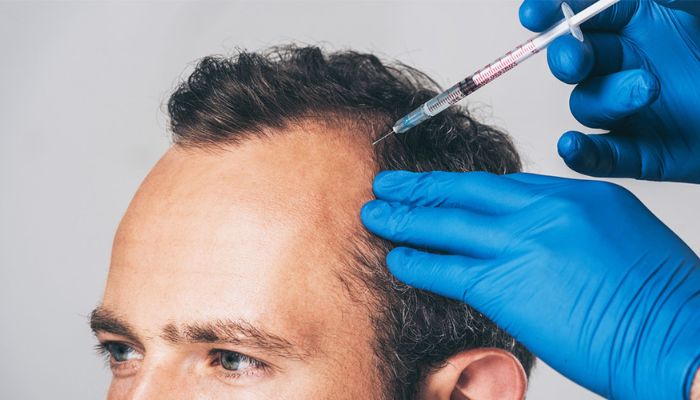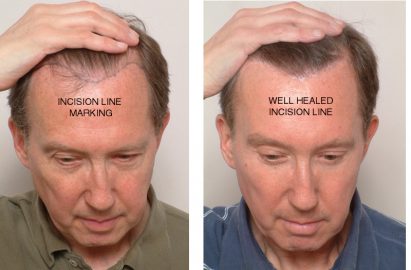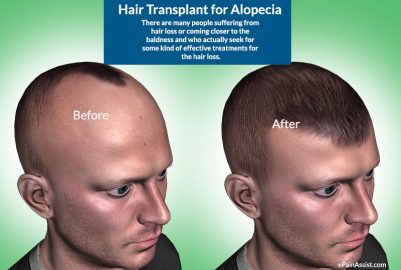Causes of Hair Loss
- Genetic Factors: One of the primary causes of hair loss is genetics. Androgenetic alopecia, commonly known as male or female pattern baldness, is hereditary and can be passed down from either parent. This condition leads to the gradual thinning of hair and can start as early as the teenage years.
- Hormonal Changes: Hormonal fluctuations, particularly those involving androgens, can significantly impact hair growth. Conditions such as polycystic ovary syndrome (PCOS) in women can lead to hair thinning and loss.
- Medical Conditions: Several medical conditions can contribute to hair loss. These include thyroid disorders, autoimmune diseases like alopecia areata, and scalp infections such as ringworm. Managing these underlying health issues is crucial for preventing further hair loss.
- Medications: Certain medications can have hair loss as a side effect. These include drugs used for cancer treatment (chemotherapy), arthritis, depression, heart problems, and high blood pressure. Discussing these side effects with a healthcare provider can help manage and mitigate hair loss.
- Stress and Lifestyle: High levels of stress, both physical and emotional, can trigger hair loss. This condition, known as telogen effluvium, often occurs after a significant stressor such as surgery, severe illness, or drastic weight loss. Lifestyle factors like poor diet and lack of exercise can also contribute to hair thinning.
 Types of Hair Loss
Types of Hair Loss
- Androgenetic Alopecia: This is the most common type of hair loss, affecting both men and women. In men, it typically presents as a receding hairline and balding on the top of the head. In women, it usually manifests as a general thinning of hair across the scalp.
- Alopecia Areata: This autoimmune condition causes the immune system to attack hair follicles, leading to patchy hair loss. It can affect any part of the body and sometimes leads to complete baldness.
- Telogen Effluvium: This temporary form of hair loss occurs when a large number of hair follicles enter the resting phase (telogen) simultaneously. It often results from severe stress, illness, or hormonal changes and usually resolves on its own.
- Traction Alopecia: This type of hair loss is caused by prolonged tension on the hair, often due to certain hairstyles such as tight braids, ponytails, or extensions. Preventing further hair damage by changing hairstyles is crucial for recovery.
- Scarring Alopecia: Also known as cicatricial alopecia, this condition involves permanent hair loss due to inflammation that destroys hair follicles and replaces them with scar tissue. It can result from various conditions, including lichen planopilaris and frontal fibrosing alopecia.
Diagnosis of Hair Loss
- Medical History and Physical Examination: A thorough medical history and physical examination are the first steps in diagnosing hair loss. This includes assessing the pattern of hair loss, reviewing any recent stressors, medications, and family history.
- Scalp Biopsy: In some cases, a scalp biopsy may be performed to examine the hair follicles under a microscope. This can help identify conditions like alopecia areata or scarring alopecia.
- Blood Tests: Blood tests can help detect underlying medical conditions that may be contributing to hair loss, such as thyroid disorders or hormonal imbalances.
- Pull Test: A pull test involves gently tugging on a small section of hair to see how many hairs come out. This can help determine the severity and progression of hair loss.
Hair Transplantation: An Effective Solution
- Overview of Hair Transplantation: Hair transplantation is a surgical procedure that involves moving hair follicles from one part of the body (usually the back or sides of the scalp) to areas experiencing hair loss. It is considered one of the most effective long-term solutions for hair restoration.
- Techniques in Hair Transplantation:
- Follicular Unit Transplantation (FUT): Also known as strip surgery, FUT involves removing a strip of scalp from the donor area, dissecting it into individual follicular units, and transplanting them into the balding areas. This method can transplant a large number of grafts in a single session.
- Follicular Unit Extraction (FUE): FUE involves extracting individual hair follicles directly from the donor area using a specialized tool. These follicles are then implanted into the recipient sites. FUE is less invasive than FUT and results in minimal scarring.
- Procedure and Recovery:
- Preparation: Before the procedure, the scalp is thoroughly cleaned, and local anesthesia is administered to numb the area. The surgeon then prepares the donor and recipient sites.
- Extraction and Implantation: In FUT, a strip of scalp is removed, and the area is sutured. In FUE, individual follicles are extracted. The surgeon then makes tiny incisions in the recipient area and carefully implants the follicles.
- Post-Operative Care: After the surgery, patients are given instructions on how to care for their scalp, including medications to reduce pain and inflammation and prevent infection. Most patients can return to work within a few days, but full recovery and hair growth can take several months.
Advantages and Disadvantages of Hair Transplantation
- Advantages:
- Permanent Solution: Hair transplantation offers a permanent solution to hair loss by using the patient’s own hair follicles, which continue to grow naturally.
- Natural Results: The transplanted hair looks and feels natural, as it grows and blends with the existing hair.
- Improved Self-Esteem: Restoring a full head of hair can significantly improve a person’s confidence and self-esteem.
- Disadvantages:
- Cost: Hair transplantation can be expensive, and the cost varies depending on the extent of hair loss and the number of grafts needed.
- Surgical Risks: As with any surgical procedure, hair transplantation carries risks such as infection, bleeding, and scarring.
- Multiple Sessions: Some patients may require multiple sessions to achieve the desired results, which can increase the overall cost and recovery time.
Alternative Treatments for Hair Loss
- Medications:
- Minoxidil: Available over-the-counter, minoxidil is a topical treatment that can slow hair loss and promote hair regrowth. It is used for both male and female pattern baldness.
- Finasteride: This prescription medication is taken orally and is primarily used to treat male pattern baldness. It works by inhibiting the production of DHT, a hormone linked to hair loss.
- Laser Therapy: Low-level laser therapy (LLLT) is a non-invasive treatment that uses red light to stimulate hair growth. It can be used as a standalone treatment or in conjunction with other therapies.
- Platelet-Rich Plasma (PRP) Therapy: PRP therapy involves injecting a concentration of the patient’s own platelets into the scalp. The growth factors in PRP can stimulate hair follicles and promote hair growth.
- Scalp Micropigmentation: This cosmetic procedure involves tattooing tiny dots on the scalp to mimic the appearance of hair follicles. It is often used to create the illusion of thicker hair or to camouflage thinning areas.
Preventive Measures and Lifestyle Changes
- Healthy Diet: Eating a balanced diet rich in vitamins and minerals, such as biotin, zinc, and iron, can support healthy hair growth. Foods like eggs, nuts, leafy greens, and fish are beneficial for hair health.
- Gentle Hair Care: Avoiding harsh hair treatments, such as excessive heat styling, chemical treatments, and tight hairstyles, can prevent hair damage and loss. Using gentle hair care products and techniques is essential.
- Stress Management: Managing stress through activities like exercise, meditation, and hobbies can reduce the risk of stress-related hair loss. Adequate sleep and relaxation are also crucial for overall health and well-being.
- Regular Scalp Care: Keeping the scalp clean and well-nourished can promote healthy hair growth. Regular scalp massages can improve blood circulation to the hair follicles, enhancing hair health.
Psychological Impact of Hair Loss
- Emotional Well-Being: Hair loss can have a significant psychological impact, leading to feelings of self-consciousness, anxiety, and depression. Seeking support from friends, family, or a mental health professional can help individuals cope with these emotions.
- Body Image: For many people, hair is an important aspect of their identity and self-image. Hair loss can affect how individuals perceive themselves and how they believe others perceive them.
- Support Groups: Joining support groups or online communities can provide a sense of solidarity and understanding. Sharing experiences and coping strategies with others facing similar challenges can be comforting and empowering.
Future Trends in Hair Restoration
- Stem Cell Therapy: Researchers are exploring the potential of stem cell therapy for hair restoration. This innovative approach aims to regenerate hair follicles using the patient’s own stem cells, offering a promising future treatment for hair loss.
- Genetic Research: Advances in genetic research are helping scientists understand the underlying causes of hair loss. Identifying specific genes linked to hair loss could lead to targeted treatments and preventative strategies.
- New Medications: Ongoing research and development in pharmacology are likely to produce new medications that can more effectively treat hair loss with fewer side effects.
Hair loss is a common condition that can affect anyone, regardless of age or gender. Understanding the causes and types of hair loss is essential for choosing the right treatment. Hair transplantation offers a permanent and natural-looking solution, but it is important to weigh the advantages and disadvantages. Alternative treatments and preventive measures can also help manage hair loss effectively. As research continues to advance, new and innovative solutions for hair restoration are on the horizon, offering hope to those affected by this condition.


